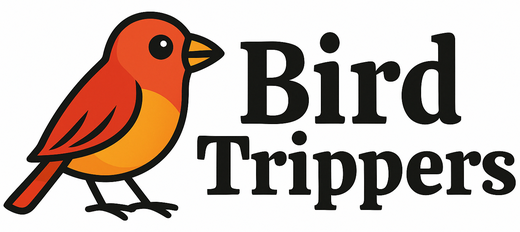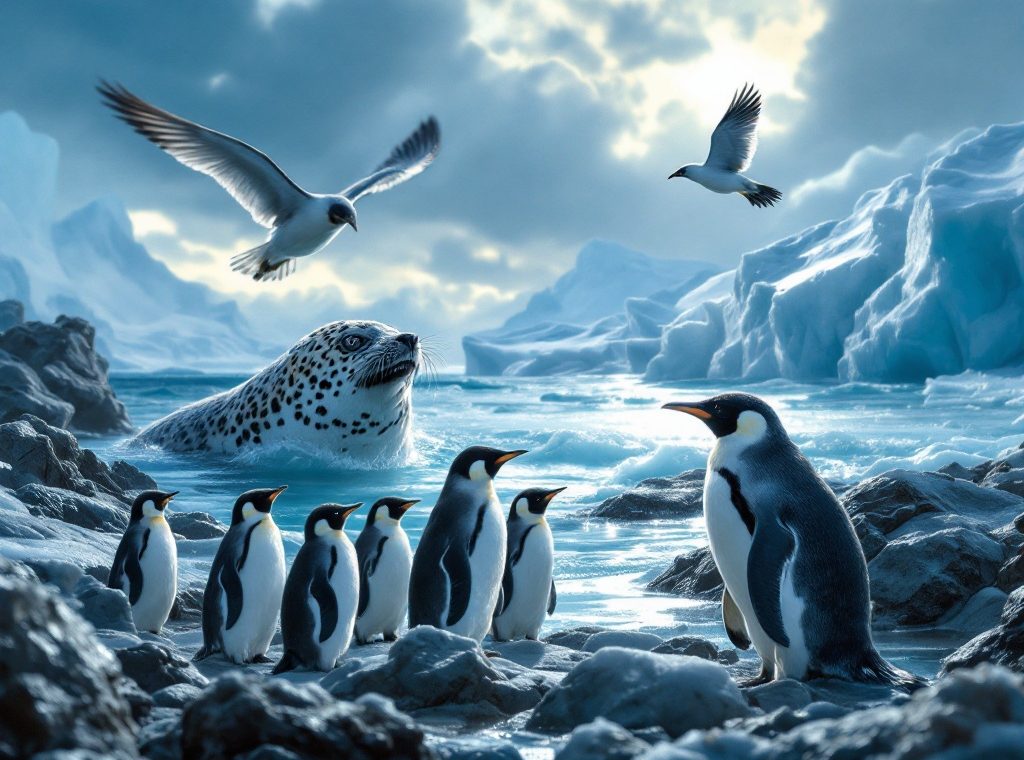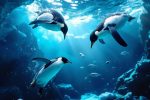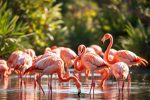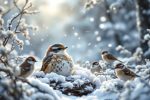Natural Enemies of Penguins
Discover the thrilling world of penguin survival! From leopard seals lurking in the depths to skuas swooping from the sky, penguins face a constant barrage of predators. This article explores the diverse threats penguins encounter in their ocean, land, and air habitats, revealing how these predators impact penguin populations and behavior. Learn how penguins employ ingenious defense strategies, like their remarkable agility and group defense tactics, to outsmart their enemies. Dive in to uncover the fascinating interplay between predator and prey in the penguin world!
Important information
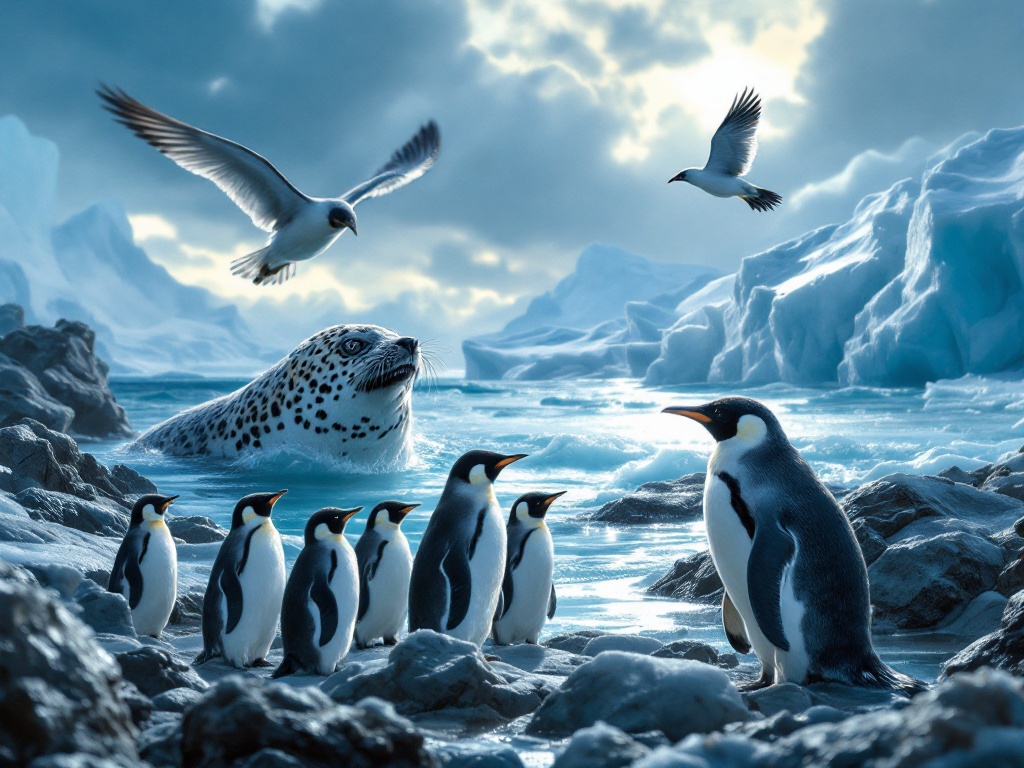
- Leopard seals are the main threat to penguins in the ocean, often ambushing them near ice or at the water’s edge.
- Killer whales and sharks also pose significant dangers to penguins in the water.
- On land, invasive species, such as stoats in New Zealand, threaten penguin nests and young.
- Skuas and giant petrels are aerial predators that target penguin chicks and eggs.
- Predation forces penguins to adapt their behavior, including foraging in groups and altering trip lengths, impacting their survival and breeding success.
Understanding the Natural Enemies of Penguins
Penguins face threats from predators in all their habitats: ocean, land, and air. In the water, leopard seals are their primary foe. Killer whales and sea lions also hunt them, though less frequently. Sharks present another underwater hazard. On land, invasive species like stoats in New Zealand endanger nesting penguins. Airborne predators, such as skuas and giant petrels, target chicks and eggs. Predatory gulls and sheathbills also prey on eggs and injured penguins. This predation significantly impacts penguin populations, reducing juvenile survival and breeding success, and even altering penguin foraging behavior. Ultimately, these predators influence the overall health and size of penguin colonies.
Main Aquatic Predators of Penguins
Penguins face numerous predators in their ocean habitat. Leopard seals are particularly adept penguin hunters. Killer whales opportunistically prey on them when available. Sea lions also pose a threat, though they hunt penguins less often. Sharks add another layer of danger to a penguin’s life. These predators typically target penguins as they forage or transition between land and sea.
Leopard Seals: A Major Threat
Leopard seals are a significant threat to penguins. They often ambush these agile birds near ice floes or as they enter and exit the water. This predation dramatically impacts penguin populations, influencing their foraging and nesting behaviors. The seals primarily target adult penguins, creating a constant survival challenge.
Killer Whales: Opportunistic Hunters
Killer whales, apex predators of the ocean, hunt in coordinated packs known as pods. Their sophisticated tactics target a variety of prey, including penguins, which are particularly vulnerable when entering the water. Orcas often exploit this vulnerability, impacting penguin populations in areas with high orca density. This predator-prey dynamic significantly influences the ecosystem, despite the orcas’ diverse diet.
Sea Lions: Occasional Predators
Sea lions are skilled hunters that frequently prey on penguins. They target them in shallow water and even on land. Young chicks are particularly vulnerable, but less agile adult penguins can also fall victim to these opportunistic predators.
Sharks: Underwater Threats
Sharks pose a significant threat to penguins, especially during foraging, increasing their vulnerability.
Land-Based Predators Impacting Penguins
Invasive species pose a significant threat to penguin populations. Introduced predators, such as cats, rats, and dogs, prey on vulnerable eggs and chicks, disrupting breeding cycles and decimating penguin numbers. In New Zealand, for instance, stoats represent a considerable danger to the native yellow-eyed penguin.
Invasive Species: A Modern Challenge
Invasive species, introduced by humans, pose a significant threat to penguins. Cats and rats, for instance, target eggs, chicks, and even adult penguins, disrupting breeding cycles and decimating populations. This new challenge requires innovative conservation strategies to safeguard these vulnerable birds.
Stoats in New Zealand: A Significant Problem
Stoats are a major threat to New Zealand’s penguins. They raid penguin nests, which has led to a decline in penguin numbers.
Aerial Predators Targeting Penguins
Predatory birds pose a significant threat to penguin populations. Skuas and giant petrels hunt vulnerable penguin chicks. Predatory gulls and sheathbills target penguin eggs and injured adults. This aerial predation significantly impacts penguin populations and their breeding success.
Skuas: Attacking Chicks
Skuas prey on live penguin chicks, targeting them directly in their nests. This hunting behavior significantly impacts the chicks’ survival rate.
Giant Petrels: Preying on the Vulnerable
Giant petrels, formidable aerial hunters, pose a significant threat to penguin populations. They particularly target vulnerable young chicks, especially those weakened or abandoned. This predation adds to the numerous challenges penguins already face, impacting chick survival and overall population numbers. During breeding season, these pressures are exacerbated by giant petrels and skuas who exploit the penguins’ vulnerability.
Predatory Gulls and Sheathbills: Targeting Eggs and Wounded Penguins
Gulls, predatory birds, pose a significant threat to penguin eggs and chicks. Sheathbills, while also penguin predators, typically target wounded individuals or scavenge carcasses.
Impact of Predation on Penguin Populations
Penguins face constant threats from predators in both water and on land. In the ocean, leopard seals are a major danger, especially during breeding season. Killer whales also hunt penguins, impacting their populations. Other marine predators include sea lions and sharks. On land, invasive species like stoats in New Zealand devastate penguin colonies. From the air, skuas and giant petrels target vulnerable chicks and eggs. Predatory gulls and sheathbills also consume eggs and injured penguins. To survive, penguins adapt their foraging behavior, taking shorter trips or avoiding rich feeding grounds to minimize risk. This affects both juvenile survival and breeding success, impacting overall penguin populations.
Marine Predators
- Leopard seals are a significant threat, especially during breeding season.
- Killer whales contribute to population decline by hunting penguins.
- Sea lions and sharks pose additional dangers.
Land and Air Predators
- Invasive species like stoats decimate colonies.
- Skuas and giant petrels target chicks and eggs from the air.
- Gulls and sheathbills also prey on eggs and injured penguins.
The constant threat of predation forces penguins to change their foraging habits, impacting juvenile survival and breeding success, and ultimately affecting the overall population.
Effects on Juvenile Penguins and Breeding
Predation significantly impacts penguin chick mortality, reducing the number of chicks that survive to adulthood. This, in turn, leads to a decline in the adult penguin population. Environmental changes, including shifts in sea ice and prey availability, exacerbate this problem by disrupting predator-prey dynamics and affecting breeding success. The combined effect of these factors contributes to an overall decrease in the penguin population.
Predation Impact on Foraging Trips
When facing danger, penguins adapt their foraging strategies by modifying both trip duration and distance.
Increased predator presence reduces foraging efficiency, presenting a substantial survival challenge.
To mitigate risk, penguins frequently forage in groups, diminishing individual vulnerability and changing their search patterns.
Group foraging improves protection and enhances food discovery. Predation risk is a key factor influencing penguin behavior and impacting their survival.
Defense Strategies of Penguins Against Predators
Penguins are remarkably agile swimmers, a skill crucial for escaping aquatic predators like leopard seals. However, airborne threats, such as skuas preying on chicks and eggs, pose another danger. To survive, penguins have developed clever defenses. Nesting in large colonies provides a collective defense, making it harder for predators to single out individuals. Fiercely protective parents further safeguard their nests and young. These adaptations are essential for thriving in their predator-filled environment.
Speed and Agility in Water
Penguins rely on their swiftness and nimbleness in the water to survive. This agility allows them to escape predators, such as leopard seals, killer whales, and sharks. Their speed and maneuverability are key to dodging danger in the ocean.
Social Animals and Group Defense
Penguins huddle together for protection from airborne predators, like skuas and giant petrels. This group defense strategy increases each individual’s survival rate by reducing their vulnerability to attack. This behavior enhances their chances of survival in the harsh Antarctic environment.
